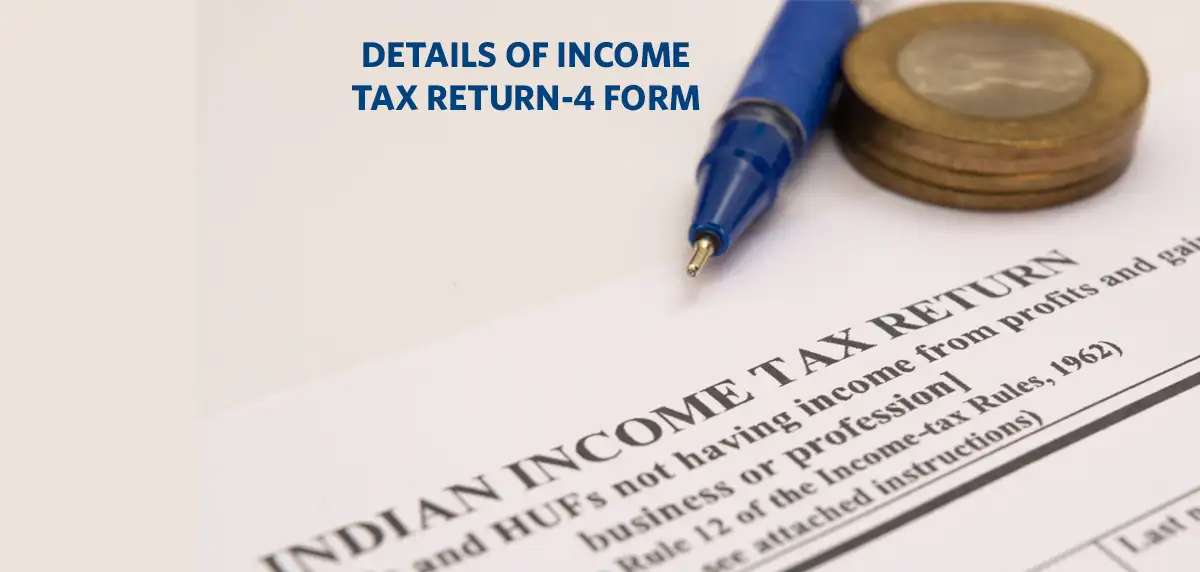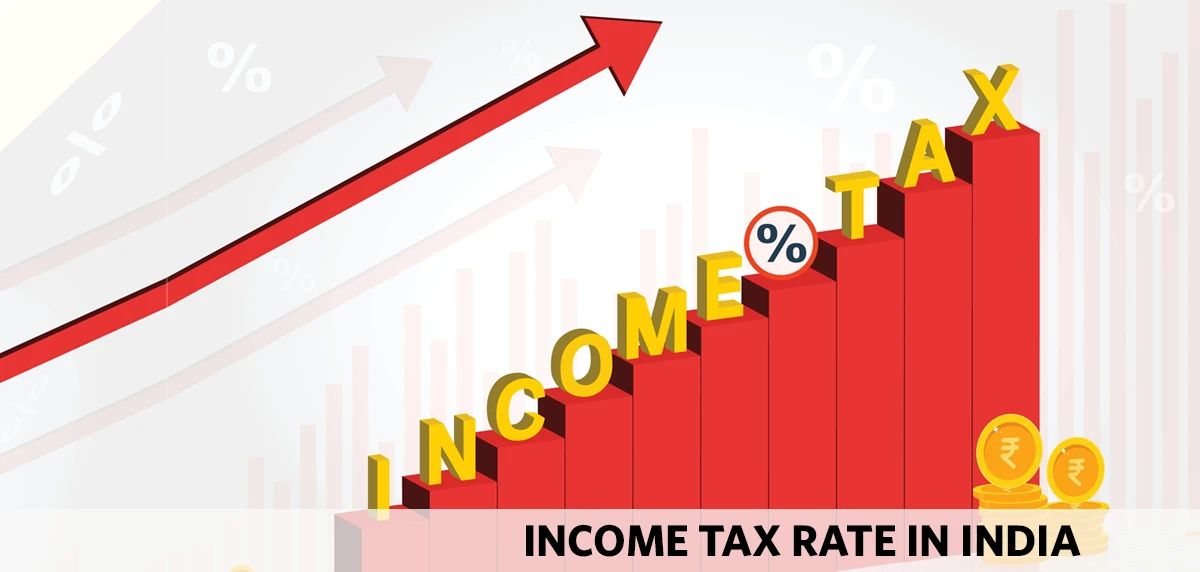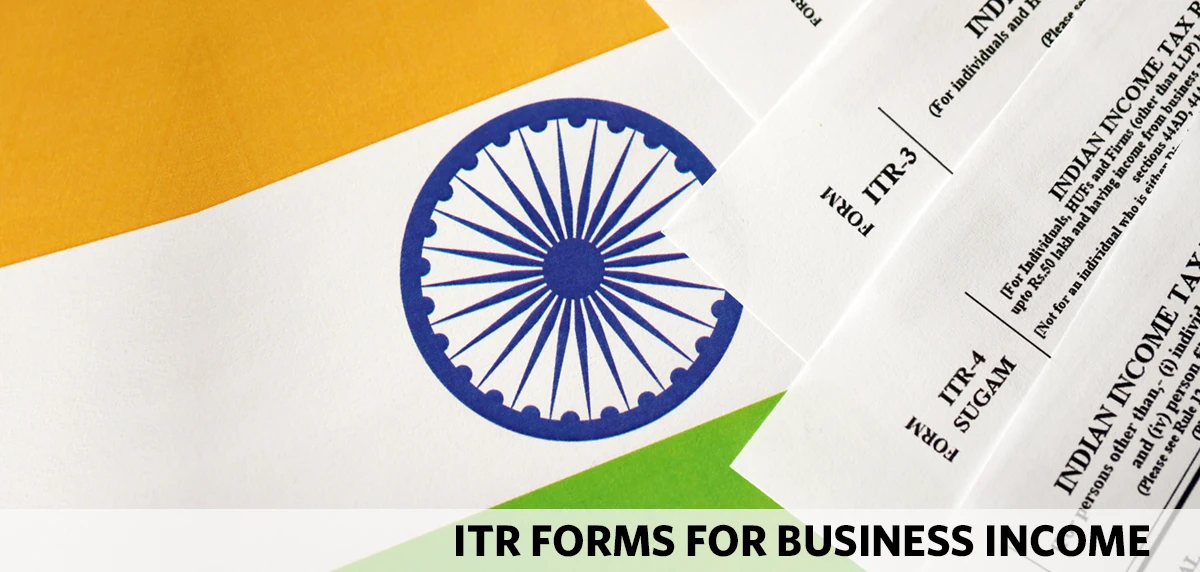The Income Tax Return 4 (ITR-4), also known as the Sugam form, is for individuals, Hindu Undivided Families (HUFs), and certain firms who meet the criteria defined as per Income Tax regulations in India. ITR 4 means streamlined compliance for those with a total income of up to INR 50 lakh from business or profession. The ITR 4 form suits small business owners, freelancers, and professionals who do not maintain detailed books. Understanding the details and meaning of ITR 4 is key for timely tax submission and clarity on how to file ITR. For those with more complex earnings, the ITR 3 form may be more relevant.
What is ITR 4?
ITR 4 refers to the Income Tax Return 4 or Sugam form, a simplified form designed for individuals, Hindu Undivided Families (HUFs), and eligible firms that opt for the presumptive income scheme under Sections 44AD, 44ADA, and 44AE. This scheme allows taxpayers to declare income at a predetermined rate, easing the burden of extensive record-keeping. ITR 4 filing benefits small businesses and professionals by saving time, but if total business turnover exceeds INR 2 crore (or INR 3 crore with significant digital transactions), the ITR 3 form must be used instead.
Who Should File ITR 4?
- Individuals, Hindu Undivided Families (HUFs), and non-LLP partnership firms earning up to INR 50 lakh in FY 2022–23 who choose the presumptive taxation scheme under Sections 44AD, 44ADA, or 44AE.
- Those with earnings of up to INR 5,000 in agricultural income, earnings from a single house property, or select “other sources” such as bank interest.
- Taxpayers receiving interest from bank deposits, post offices, cooperative societies, unsecured loans, or tax refunds.
Who is Eligible to File ITR 4?
- Must be a resident of India, as defined by the Income Tax Act, with business or professional income falling under the presumptive taxation scheme.
- Eligible if turnover/gross receipts do not exceed INR 2 crore for business, and INR 50 lakh for professionals (including freelancers).
- Salary or pension income can also be included, along with income from a single house property and certain “Other Sources.”
- Long-term capital gains are permissible up to INR 1.25 lakh if there are no carried-forward losses.
- ITR 4 is unsuitable for those with more than one house property or turnover beyond the prescribed limit.
Taxpayers can use an income tax calculator to check their taxability and ensure they are filing the correct ITR.
Who is Not Eligible to File ITR 4?
- Non-resident Indians (NRIs) or individuals classified as Resident but Not Ordinarily Resident (RNOR).
- Those whose total income exceeds INR 50 lakh or those who have agricultural income above INR 5,000.
- Individuals who have more than one house property or are company directors.
- Taxpayers holding unlisted equity shares or who incurred capital gains (short-term or long-term).
- Persons with lottery winnings or gambling income during the financial year.
- Individuals looking to claim relief under Sections 90/90A/91 for foreign tax credit or double taxation.
- Those who have gains from Virtual Digital Assets or whose TDS is deducted under Section 194N.
- Taxpayers not eligible for presumptive taxation or surpassing turnover limits must avoid income tax return 4 and opt for another form, such as the ITR 3 form.
Structure of the ITR 4 Form
The ITR 4 provides a streamlined layout for taxpayers who fall under the presumptive taxation scheme. By understanding the structure of the Income Tax Return 4 form, you can simplify ITR 4 filing and avoid unnecessary complications. Below is an overview of each crucial section.
Part A: General Information
Includes essential personal details (e.g., name, PAN, Aadhaar) and any representative information if filing through an authorised person.
Gross Total Income
Breaks down earnings across five heads of income (e.g., salary, house property) and consolidates them into a final total.
Part C: Total Taxable Income and Deductions
Allows you to claim eligible deductions such as insurance premiums, health coverage expenses, and pension contributions, thus lowering your taxable income.
Part D: Tax Status and Computation
Provides details on the overall tax liability, how to file ITR payments, and provides an option to specify bank accounts for any refund.
Schedule BP: Details of Business or Professional Income
Focuses on presumptive income under Sections 44AD, 44ADA, or 44AE. Those exceeding turnover limits may need the ITR 3 form.
Additional Schedules (IT, TDS, TCS)
Record advance tax payments, tax deducted at source (TDS), and any tax collected at source (TCS).
Verification
Final confirmation that all details are accurate, including your signature and place of filing.
Section 44AD – Presumptive Taxation Scheme
Under Section 44AD, small-scale businesses can simplify their tax obligations by using a presumptive taxation scheme. Instead of maintaining detailed books, they may declare a fixed percentage of turnover as profit. By choosing ITR 4 filing, they can fulfill Income Tax Return 4 requirements without extensive record-keeping. This approach frees up time to focus on core business operations. For those wondering how to file ITR easily, this scheme reduces complexities and efficiently meets compliance needs.
Major Changes in ITR-4 Form from AY 2025-26
Inclusion of LTCG Reporting
Now, individuals with long-term capital gains (LTCG) of up to INR 1.25 lakh from the listed equity shares or equity-oriented mutual funds can opt for a simpler return if no capital losses are carried forward. Earlier, any LTCG required filing a higher form, but this change enables more streamlined reporting in certain cases.
Tax Regime Selection (Section 115BAC)
The default tax regime has shifted to the new system, and taxpayers can opt out annually within the form ITR 4. Those who opted out in AY 2024-25 must confirm or modify their choice for AY 2025-26. First-time opt-outs must file Form 10-IEA before the return due date.
Enhanced Deductions and Disclosures
Deductions under Sections 80C to 80U must be chosen from a drop-down, with specific clauses to ensure clarity. Additional fields cover retirement account income from abroad, helping track relief under Section 89A.
Aadhaar Field Update
Only valid 12-digit Aadhaar numbers are accepted. The 28-digit Aadhaar Enrolment ID is no longer valid.
Additional TDS Column
Under Schedule TDS, taxpayers can specify the section under which the Tax is Deducted at Source, improving transparency in income tax return ITR 4 filing.
How to File ITR 4 Form?
Filing the ITR 4 form can be done either offline or online, depending on your eligibility and preference. Below is a concise guide on how to file ITR 4.
Offline Filing:
- Available only to individuals aged 80 years or older, or those with an annual income up to INR 5 lakh and not claiming a refund.
- The form can be submitted in paper format or as a bar-coded return.
- Upon submission, the Income Tax Department will provide an acknowledgement.
Online Filing:
- This is the most common ITR 4 filing method, requiring a digital signature or e-verification.
- Download Form ITR 4 from the official website (no charges apply) or use the department’s e-filing portal.
- After submitting, verify the return via Aadhaar OTP, Electronic Verification Code (EVC), or by sending the signed ITR-V to the CPC within 120 days of filing.
If your turnover or financial details exceed limitations under presumptive schemes, the ITR 3 form may be required. Understanding ITR 4 meaning ensures you comply with regulations and know how to file ITR accurately, streamlining your tax submission process.
Filing Income Tax Return 4 can be a straightforward process when you understand the presumptive scheme, eligibility norms, and form structure. From business owners to freelancers, the simplified procedures reduce record-keeping requirements and streamline tax compliance. Whether filing online or offline, following the correct steps ensures you accurately report income, claim deductions, and remain compliant with tax laws. If your income sources are more extensive, the ITR 3 form may be more suitable. Ultimately, by learning how to file ITR correctly, you can enjoy a transparent, hassle-free approach to fulfilling your annual tax obligations.





















